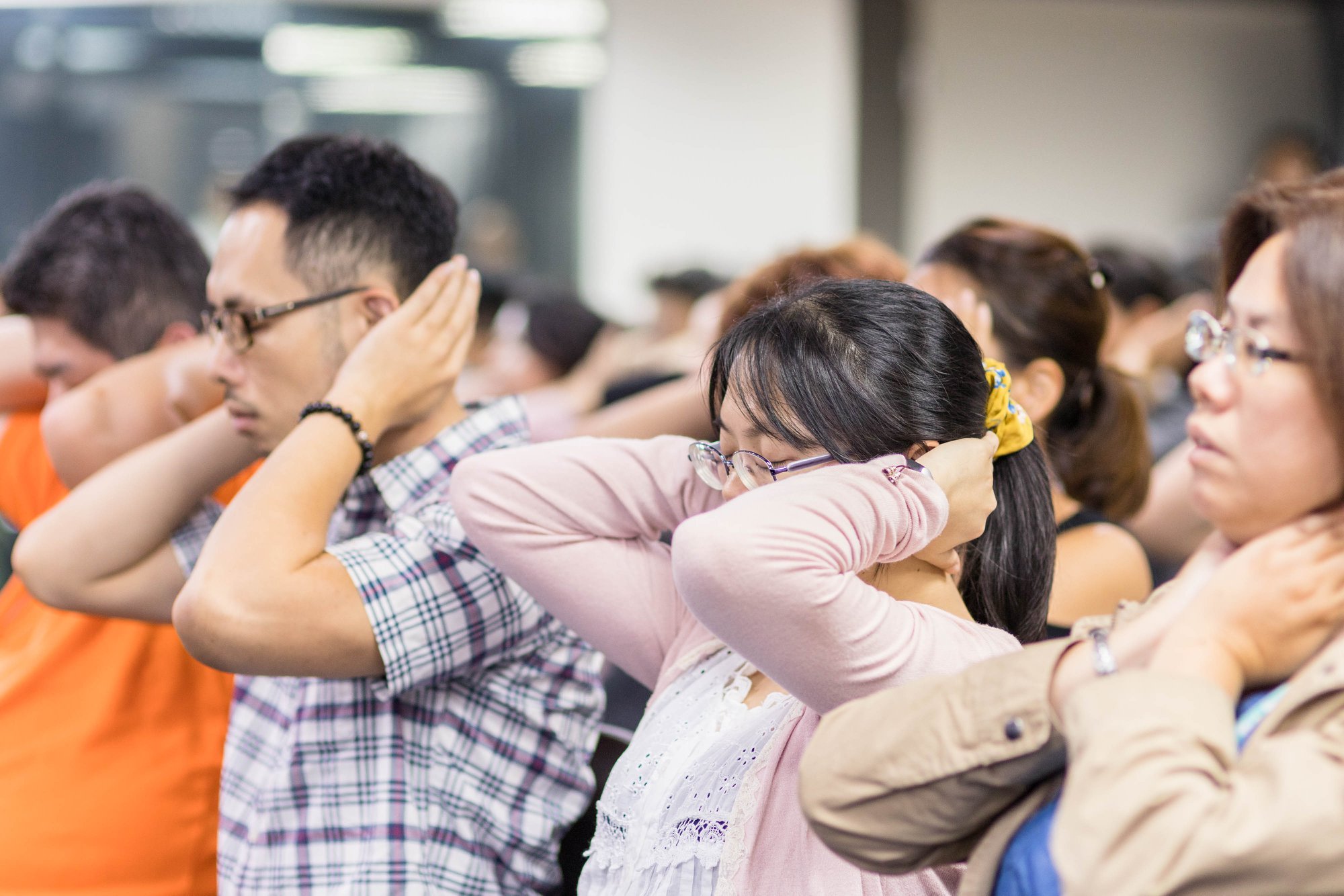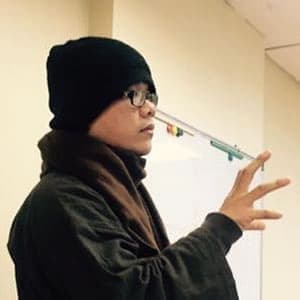結合日式和西洋靈氣 Working with Japanese and Western Reiki
結合日式和西洋靈氣 | 2014.12.16

結合日式和西洋靈氣 Working with Japanese and Western Reiki
威廉·李連 William Lee Rand
在過去的歲月裡,我們被教導有關於自己所學的靈氣是由臼井老師所教導的技術。 但在Arjava Petter與他的妻子 Chetna Kobayashi、土居裕老師和其他人所做的研究中,我們對臼井靈氣取得了突破性的理解,並讓西方人了解到許多傳統的新技術。 這與我們原先被告知的臼井靈氣形成了對比,但我們現在了解到實際上我們原先所學是靈氣傳到西方後發展的技術。
當我們第一次開始獲得這種理解時,許多人認為比較理想的是只練習日式的靈氣,並儘可能接近原本臼井老師的指導與練習。 但是現在我們已經有時間練習日本的靈氣技巧並將它們與西方的靈氣風格進行相互的比較,對什麼可能是最好的方法有了更好的理解。
高田夫人向西方國家展示的靈氣技術,她個人宣稱源自於臼井老師且未曾改變。 然而,現在我們與許多人已經突破了在日本研究靈氣的障礙,我們發現高田女士教授的大部分技術主要是她自己的創新,也可能是林忠次郎的創新。 將她的風格與臼井博士的風格進行了比較,可以說在很多情況下,她的靈氣風格與臼井老師是完全相反的。
高田夫人的風格仰賴於記住規則並按照對每個客戶都保持不變的標準程序進行靈氣工作。 這包括進行治療的標準手位姿勢。 結果最後變得如此極端,以至於當我試圖通過將手放在腿上給自己靈氣時,我的第一位靈氣老師非常強調地告訴我“那不是靈氣”,因為它不是標準手位之一。 我發現這種態度令人感到窒息,因為它並不支持學生對靈氣的內在意識的發展與使用。 它也沒有承認每個客戶都有不同的需求。 然而,情況並非總是如此,因為高田的教導風格中確實包括一些讓靈氣之手自由引導的方式(靈示法),但這只是在給予標準手位治療之後。
儘管該系統存在一些限制,但它仍然具有其價值。 通過將手均勻地放在身體的大部分位置上,讓整個人都得到了治療,從而創造了平衡。 此外,通過使用這種技術,您可以自動處理最需要的區域,無論您是否知道它們位於何處。 因此,雖然高田夫人的風格可能造成局限性,但它幾乎可以讓任何人都產生接近一致的治療結果。
1980 年 12 月高田夫人去世後,有一段時間,她的大多數學生都繼續按照她所教的方式練習。 但幾年後,一些人開始試驗並引導、開發或發布新的靈氣系統。 其中第一個是Mari-el和Radiance Technique。 隨之而來的還有更多,現在西方至少有 30 種不同的靈氣正在流傳中。 在這樣的環境中,如果要明智地選擇要學習的靈氣系統,就需要清楚地了解自己的個人需求以及遵循內在指導的能力。
雖然西方開發了許多新技術,但高田女士教授的基本架構似乎是其中大部分系統的基礎,治療方法都是繼續基於她的標準手位姿勢。
臼井老師的風格代表了一種不同的方法。 他並沒有標準的手部姿勢。 他教他的學生使用自己的直覺來指導他們放置手位的能力。 這通常會為每個客戶帶來獨特的治療。 他教授了幾種如何這樣子做的技術,包括 病腺(Byosen) 掃描,其中一個人使用手的敏感性來找到需要靈氣的區域以及 靈示法(Reiji-ho),其中一個人直接用直覺或內在的感受來了解客戶的能量在哪個領域失去平衡,且需要靈氣。 這種風格驗證了自己的微妙意識並鼓勵其發展。 它還允許人們與靈氣能量建立工作關係,從而受到其潛在的指導。
除了上述技巧外,臼井老師還教授合掌冥想法(Gassho)、乾浴法(Kenyoku),這是一種清潔能量的方法,呼氣法(Koki-ho),一種使用呼吸治癒的方法,凝視法(Gyoshi-ho),一種用眼睛發送靈氣的方法 ,邪氣切斷法(Jacki-Kiri Joka-ho),一種清除物體負能量的方法和遠隔治療法(Enkaku chiryo),一種發送遠距離治療的方法。
由此可以看出,高田夫人的風格側重於每個客戶都使用統一背誦的治療程序,並且只使用手來傳遞靈氣。 相比之下,臼井老師的風格靈活,著重治療師的發展意識,根據客戶的特定需求並提供獨特的治療。 他還教瞭如何不僅用手,還用呼吸和眼睛發送靈氣,還包括其他技巧。
由於這些風格中的每一種都如此不同,起初許多人認為他們必須在它們之間做出選擇。 既然靈氣來自臼井博士,似乎合乎邏輯的選擇是盡可能接近臼井博士的風格來練習靈氣。 然而,既然我們有時間練習和比較這兩種風格,許多人得出的結論是,既然兩種風格都有價值,最好的方法就是將它們整合起來。 感覺是通過將西方和日本風格結合在一個系統中,實現了兩全其美。 更加線性、邏輯和左腦的西式風格可以平衡日式風格,後者是更加開放、直觀和右腦化的。
很高興看到靈氣展現的如此美妙。 當我們專注於靈氣並讓它引導我們時,我們會發現靈氣如何通過我們表達更高層次的和諧與平衡。 起初似乎是衝突的東西正在變成互補風格的美麗融合。 這將為我們自己、我們的客戶和我們周圍的世界帶來更高水平的健康和幸福的可能性。 願我們都被允許選擇越來越多的和平、自由和愛。
延伸閱讀:
《Reiki的原點「傳統靈氣」的歷史資料》
《林忠次郎赴美講習的相關剪報》
《Phyllis Lei Furumoto接受80年代電視訪問》
《大師訪談-土居裕大師專訪 》
《臼井師祖出生地紀念碑落成紀錄》
《你學的真的是靈氣嗎?》
Working with Japanese and Western Reiki
by William Lee Rand
In the past several years we’ve learned a lot about the Reiki taught by Dr. Usui. The research done by Arjava Petter, his wife Chetna Kobayashi, Mr. Doi and others have created a breakthrough in our understanding of Usui Reiki and informed us of many techniques new to the West. This contrasts with what we had been told was Usui Reiki, but what we now understand was actually a Western development. When we first began to gain this understanding, many thought that the ideal would be to practice only the Japanese style of Reiki and to stay as close to what Dr. Usui practiced as possible. But now that we have had time to practice the Japanese Reiki techniques and compare them with the Western style, a better understanding has developed about what might be the best approach.
The style of Reiki presented to the West by Mrs. Takata, was promoted by her as being the unaltered methods of Dr. Usui. However, now that many have broken through the barriers that prevented us from researching Reiki in Japan, we have discovered that most of the techniques Mrs. Takata taught were mainly of her own creation and possibly that of Dr. Hayashi. When comparing her style with that of Dr. Usui, one could say that in many cases her’s was methodically opposite to what Dr. Usui practiced.
Mrs. Takata’s style relied on memorizing rules and working with standard procedures that remained the same for each client. This included the standard hand positions for giving a treatment. This was followed to such an extreme that when I attempted to give myself Reiki by placing my hands on my legs, my first Reiki teacher told me in a very emphatic way that “that is not Reiki” because it was not one of the standard hand positions. I found this attitude stifling, as it did not support the development or use of the student’s inner awareness of Reiki. It also didn’t acknowledge the differing needs of each client. However, this was not always the case as the Takata style did include some reference to allowing your Reiki hands to guide you, but this was only after one had given the standard treatment.
Even though there are some limitations to this system, it still has value. By placing the hands evenly over most of the body, the whole person is treated, thus creating balance. In addition, by using this technique, one treats the areas of greatest need automatically whether you know where they are located or not. So, while the Takata style may have limits, it allows virtually anyone to produce consistent results.
After Mrs. Takata passed in December 1980, for a while most of her students continued to practice exactly as she had taught. But in a few years, some began to experiment and to channel, develop or release new systems of Reiki. The first of these were Mari-el and the Radiance Technique. Many more followed and there are now at least 30 different kinds of Reiki being practiced in the West. In an environment like this, one needs to have a clear understanding of ones personal needs and the ability to follow ones inner guidance if one is to wisely choose which Reiki system(s) to study.
While many new techniques have developed in the West, the same basic framework taught by Mrs. Takata seems to be the basis of most of these with treatments continuing to be based on her standard hand positions.
Dr. Usui’s style represents a different approach. He didn’t have standard hand positions. He taught his students to develop the ability to use ones intuition to guide one to the right hand placements. This often resulted in a unique treatment for each client. He taught several techniques for doing this including Byosen scanning wherein one uses the sensitivity in ones hands to find the areas needing Reiki as well as Reiji-ho in which one is guided directly with ones intuition or perhaps an inner sensitivity to know where the client’s energy field is out of balance and in need of Reiki. This style validates ones own subtle awareness and encourages its development. It also allows one to develop a working relationship with the Reiki energy and thus be guided by its potential.
In addition to the above techniques, Dr. Usui also taught Gassho meditation, Kenyoku or dry bathing which is a method for cleansing ones energy, Koki-ho, a method that uses the breath to heal, Gyoshi-ho, a method of sending Reiki with the eyes, Jacki-Kiri Joka-ho, a method for clearing negative energy from objects and Enkaku chiryo which is a method for sending distant healing.
From this we can see that Mrs. Takata’s style focused on a memorized system that was the same for each client and used only the hands to transmit Reiki. In contrast, Dr. Usui’s style was flexible and relied on the developed awareness of the practitioner to provide a unique treatment based on the specific needs of the client. He also taught how to send Reiki not only with the hands, but also with the breath, and the eyes and included other techniques as well.
Since each of these styles is so different, at first many thought that they would have to choose between them. And since Reiki came from Dr. Usui, it seemed that the logical choice would be to practice Reiki as closely to Dr. Usui’s style as possible. However, now that we have had time to practice and compare both styles, what many have concluded is that since both styles have value, the best approach would be to integrate them. The feeling is that by bringing both the Western and the Japanese styles together in one system, the best of both worlds is achieved. The Western style, which is more linear, logical and left brained balances the Japanese style, which is more open ended, intuitive and right brained.
It is a joy to see how wonderfully Reiki is unfolding. As we focus on Reiki and allow it to guide us, we discover greater levels of harmony and balance in how it can express through us. What at first seemed like a conflict is becoming a beautiful integration of complementary styles. This will lead to the possibility of even greater levels of health and well being for ourselves, our clients and the world around us. May we all be allowed to choose ever-increasing peace, freedom and love.
《靈氣療法》 《能量治療》 《影片採訪》 《研究紀錄》 《中醫隨筆》 《知命識命》
《靈氣療法》
- 【靈氣】現代靈氣Q&A
- 【靈氣】土居裕老師-芦屋來函
- 【靈氣】明治天皇御製和歌
- 【靈氣】參拜臼井紀念碑注意事項
- 【靈氣】令和6年.東京.新春靈授會
- 【靈氣】2024年新春靈授交流會
- 【靈氣】2023年新春靈授交流會
- 【影片】2022 中心暨學會慈善義工探訪活動
- 【靈氣】與臼井靈氣的緣分,安心立命之道
- 【靈氣】關於現代靈氣法的研修制度
- 【靈氣】關於愛麗絲黑田
- 【靈氣】2022年新春靈授交流會紀錄
- 【靈氣】靈氣符號的使用方式
- 【個案】靈氣與慢性疲勞症候群
- 【個案】靈氣和潰瘍性結腸炎
- 【個案】靈氣協助諮商-治愈約會問題
- 【靈氣】成為一名優秀的靈能者
- 【靈氣】關於傳統靈氣學會本身的教學制度
- 【靈氣】臼井甕男老師的訓示
- 【靈氣】土居裕老師的專訪(上)
- 【個案】靈氣治療貓咪與癌症
- 【靈氣】在臼井甕男之前的靈氣
- 【靈氣】高田女士的靈氣講義
- 【靈氣】臨終給予靈氣治療
- 【靈氣】了解 病腺 掃描法
- 【靈氣】土居裕老師的專訪(下)
- 【個案】靈氣的骨牌反應
- 【靈氣】靈授與點化儀式不完整的問題
- 【個案】靈氣治愈接地問題
- 【靈氣】許多種派別的靈氣
- 【靈氣】2023年 大阪.臼井靈氣百年祭
- 【靈氣】新冠病毒疫情對靈氣教學的影響
- 【靈氣】現代靈氣法-中文課程代理販售公告
- 【靈氣】寶島聯播網大千電台專訪紀錄
- 【靈氣】現代靈氣法講義中文版翻譯確認
- 【靈氣】2021年新春靈授交流會紀錄
- 【靈氣】土居裕老師捎來的短信
- 【靈氣】靈氣個案資料庫計畫
- 【靈氣】2020年新春靈授交流會紀錄
- 【靈氣】靈氣用於動物的道德規範
- 【靈氣】靈氣為你創造豐盛
- 【靈氣】關於統合Attunement這件事
- 【靈氣】Reiki的原點「傳統靈氣」歷史資料
- 【靈氣】Phyllis Lei Furumoto離世
- 【靈氣】靈氣的解剖學(Anatomy For Reiki)
- 【靈氣】2019靈氣國際學術研討會(威廉)
- 【靈氣】日本靈氣朝聖團.特別研修課程
- 【靈氣】台北.聖火靈氣能量分享會
- 【靈氣】日本蘆屋.國際研討交流會記錄
- 【靈氣】現代靈氣通信 報導台灣交流會紀錄
- 【靈氣】如何增進靈氣的手感
- 【靈氣】臼井師祖出生地紀念碑落成紀錄
- 【靈氣】網路與遠距點化的效果
- 【靈氣】2018靈氣國際學術研討會(土居裕)
- 【靈氣】土居裕師範來信
- 【靈氣】高田女士的筆記
- 【靈氣】臼井甕男誕生地紀念碑建立事宜
- 【靈氣】你學的真的是靈氣嗎?
- 【靈氣】關於靈氣五戒的使用
- 【靈氣】土居裕in台北.現代靈氣法交流會
- 【靈氣】一封寫給英國人的推薦信
- 【靈氣】治療寵物與植物的手位
- 【靈氣】靈氣讓你心想事成(夢想成真)
- 【靈氣】暑期兒童靈氣班有感
- 【靈氣】靈氣導師的責任
- 【靈氣】關於靈氣的12個基礎手位
- 【靈氣】家裡剛制喪完的人可以做靈氣嗎
- 【靈氣】學習的障礙
- 【個案】靈氣直到臨終最後一刻
- 【靈氣】學習靈氣的副作用
- 【靈氣】療癒之道,終生不悔
- 【靈氣】林忠次郎赴美講習的相關剪報
- 【靈氣】諾瓦克·喬科維奇與靈氣符號
- 【靈氣】關於神祕傳這件事
- 【靈氣】關於動物的療癒手位
- 【個案】用靈氣治療歷代祖先的能量模式
- 【個案】生病毛孩的遠距靈氣療癒
- 【靈氣】關於個案紀錄
- 【靈氣】日式傳統靈氣技法-初傳研討會紀實
- 【靈氣】用靈氣治療偏頭痛
- 【靈氣】霊気療法必携公開傳授説明
- 【個案】靈氣幫助多發性硬化症康復
- 【靈氣】所謂「直傳」充其量只是「家傳」
- 【靈氣】靈氣應用在美軍醫療體系的報導
- 【靈氣】霊気療法必携原文
- 【靈氣】增強靈氣的方法
- 【靈氣】關於MantrasReikiSystem
- 【靈氣】現代靈氣Master國際共通準則
- 【靈氣】靈氣宗師稱號的起源與正統性
- 【靈氣】臼井霊気療法学会-歷代會長
- 【靈氣】KarunaReiki對於遙距點化的評論
- 【靈氣】靈氣歷史的循證研究
- 【靈氣】治愈你的信仰創傷
- 【靈氣】治療的心法
- 【靈氣】尋找能量的閘道
- 【靈氣】課前練習-冥想的基本步驟
- 【靈氣】靈氣和創傷後壓力症候群 PTSD
- 【靈氣】中心靈氣傳承表
- 【靈氣】1986年靈氣在日本的雜誌介紹文章
- 【靈氣】結合日式和西洋靈氣
- 【靈氣】動物愛靈氣(Animals Love Reiki)
- 【靈氣】如何讓您的靈氣能量更有效
- 【靈氣】鞍馬山靈氣朝聖記
- 【靈氣】關於靈氣符號(Reiki Symbols)
- 【靈氣】活化水晶陣的方式
- 【個案】靈氣治療腳底疼痛
- 【靈氣】世界極地水晶陣
- 【靈氣】應用靈氣掃描(病腺法)的技巧
- 【靈氣】臼井氏靈氣療法階級一覽
- 【個案】靈氣治愈膝傷
- 【靈氣】連結慈悲的能量
- 【靈氣】唱頌療癒法
- 【個案】用靈氣治療 登陸不適症候群
- 【靈氣】使用靈氣冥想
- 【個案】人生的擺渡
- 【靈氣】靈氣治療小型鳥類
- 【個案】病房外的眼淚
- 【靈氣】傳統學會的靈授規定
- 【靈氣】三脈的理論
- 【靈氣】靈氣和長生學有何不同
- 【靈氣】Antahkarana水晶能量矩陣
- 【個案】阿嬤的願望
- 【靈氣】靈氣療法體驗報告
- 【靈氣】能量符號學
- 【靈氣】什麼是Karuna靈氣
- 【靈氣】靈氣的十大特點
- 【靈氣】靈氣幫助狗狗再次奔跑和玩耍
- 【靈氣】不受歡迎的房客
- 【靈氣】靈氣與氣功的差別
- 【靈氣】靈氣治療中風
- 【靈氣】關於二十一天淨化期
- 【靈氣】關於守護神與ReikiGuide
- 【靈氣】關於Attunement(點化/啟動)
- 【靈氣】什麼是靈氣
- 【靈氣】靈氣清除附靈狀態
- 【個案】藍灰色眼睛的比丘尼
- 【靈氣】靈氣幫助酗酒者和癮君子恢復
- 【靈氣】靈視(眼通)確認靈氣效果
- 【靈氣】山口千代子的學習歷程
《能量治療》
- 【能量】頌缽治療的科學研究
- 【能量】冥想的好處與醫學研究
- 【能量】人體能量的反射與共振-耳穴療法
- 【能量】能量治療在臨床醫學的應用
- 【能量】科學地測量人體的能量場
- 【能量】關於超意識狀態
- 【能量】關於手感的一些事
- 【能量】心靈力量與疾病的關係
- 【能量】關於病氣反噬這件事
- 【能量】味覺.快速建立關係的竅門
- 【能量】聽覺-活化肉體的特效藥
- 【能量】關於「血腦障壁」這件事
- 【能量】關於撰寫心得這件事
- 【能量】迷走神經-連結身體與靈魂間的橋梁
- 【能量】嗅覺是大腦的快速開關
- 【能量】人體療癒的關鍵-副交感神經系統
- 【能量】地球的脈輪與萊伊線
- 【能量】關於激光柱的挑選
- 【能量】關於Sekhmet女神的小知識
- 【能量】純淨的SEKHEM能量
- 【能量】古埃及能量療法Sekhem上課心得
- 【能量】關於人體的能量系統-昆達里尼系統
- 【能量】關於人體的能量系統-心輪合一系統
- 【能量】關於人體的能量系統-其他脈輪系統
- 【能量】關於能量震幅這件事
- 【能量】關於人體的能量系統-脈輪系統
- 【能量】關於人體的能量系統-精微體
- 【能量】關於人體的七層氣場
- 【能量】Sekhem生命之光-靈性的進化
- 【能量】HelenBelotSekhem(古埃及能量)
- 【能量】關於導師班的三個選修課程
- 【能量】Sekhem對於遙距點化的看法
- 【能量】關於Seichim/SKHM的歷史
- 【能量】高振幅、高頻率、高功率的迷思
- 【能量】天氣冷~我的身心不舒服怎麼辦?
- 【能量】關於人體的能量系統-身體情緒中心
- 【能量】七脈輪與腺體的關係
- 【能量】水晶能量與眾多水晶介紹
- 【能量】能量療癒師 Healing你的身心靈
- 【能量】能量奧義書
- 【能量】關於修行這件事
《影片採訪》
- 【影片】大阪.靈氣百年祭 影片專訪
- 【影片】大師訪談:光明靈氣道 稲本百天
- 【影片】Phyllis Furumoto接受電視訪問
- 【影片】美國WMTW abc 8 新聞介紹靈氣
- 【影片】靈氣影響癌細胞分裂與成長的研究
- 【影片】芳香療法改善失智症的研究
- 【影片】受訪紀錄-關於東西方的靈氣
- 【影片】美國 Channel 7 新聞-靈氣與白血病
- 【影片】澳洲 Channel 7 新聞-靈氣與癌症
- 【影片】2018靈氣國際研討會紀實
- 【影片】英國BBC節目介紹-靈氣治療
- 【影片】美國ABC新聞介紹-靈氣與自閉症
- 【影片】美國ABC新聞介紹-靈氣健康服務
- 【影片】英國聖喬治醫院靈氣研究計畫募款
- 【影片】奧茲博士.介紹靈氣並示範
《紀錄研究》
《中醫隨筆》
《知命識命》
 【作者:宇謙老師】
【作者:宇謙老師】中國執業中醫師(北京/天津).天津中醫藥大學針灸博士.多年來致力於推廣外身心靈課程、能量治療及健康講座,學生包括了專業的諮商師、醫護人員及神職人員。
《轉載摘錄請標示出處/本站成立於2003年12月 》
 【報名課程與問題請聯絡助教】
【報名課程與問題請聯絡助教】助教Wendy(小豬):
E-mail:littlepig670905@gmail.com
Line ID:littlepig0905



